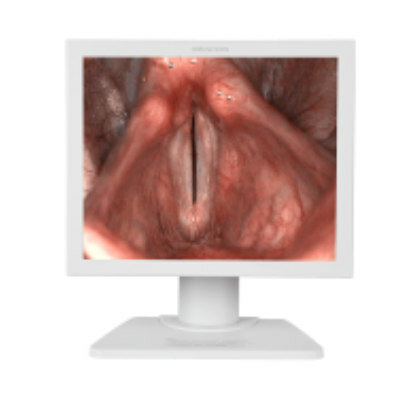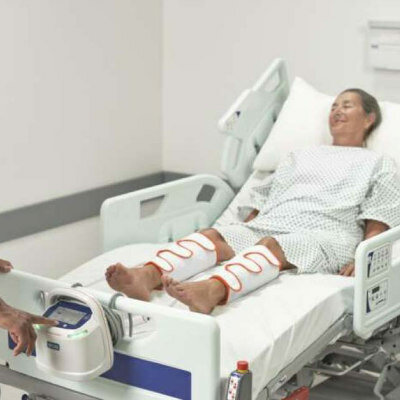Cannabis Used by Up to a Quarter of Cancer Patients
|
By HospiMedica International staff writers Posted on 05 Oct 2017 |
A new study reports that approximately 25% of cancer patients used marijuana in the past year, mostly for physical and psychological symptoms.
Researchers at Fred Hutchinson Cancer Research Center (Seattle, WA, USA) and the University of Washington (UW; Seattle, USA) conducted a cross-sectional survey among 926 patients (median age 58 years) in order to determine the prevalence and methods of use, perceived benefits, and the sources of information on cannabis for medical use; random urine samples for tetrahydrocannabinol provided survey validation. The study was conducted in Washington State, which has legalized marijuana for medicinal and recreational use.
The results revealed that a majority of the patients had a strong interest in learning about cannabis during treatment and wanted information from cancer providers. Previous use was common (66%), with 24% using cannabis in the last year, 21% using cannabis in the last month, and 18% using during the previous week, a percentage similar to that found in the random urine samples (14%). Cannabis use was primarily for physical (75%) and neuropsychiatric symptoms (63%). Legalization significantly increased the likelihood of use in more than half of the respondents. The study was published on September 25, 2017, in Cancer.
“Cancer patients desire but are not receiving information from their cancer doctors about marijuana use during their treatment, so many of them are seeking information from alternate non-scientific sources,” said lead author Steven Pergam, MD, MPH. “We hope that this study helps to open up the door for more studies aimed at evaluating the risks and benefits of marijuana in this population… because if we do not educate our patients about marijuana, they will continue to get their information elsewhere.”
Marijuana is the name given to the dried buds and leaves of varieties of the Cannabis sativa plant, and has been used in herbal remedies for centuries. The two most active components in marijuana are delta-9-tetrahydrocannabinol (THC), and cannabidiol (CBD). THC seems to cause the "high" reported by users, and also can help relieve pain and nausea and reduce inflammation. CBD can help treat seizures, reduce anxiety and paranoia, and counteract the THC high. Eight U.S. states and the District of Columbia have legalized recreational marijuana, and over half of U.S. states have passed laws allowing for medical marijuana in some form.
Related Links:
Fred Hutchinson Cancer Research Center
University of Washington
Researchers at Fred Hutchinson Cancer Research Center (Seattle, WA, USA) and the University of Washington (UW; Seattle, USA) conducted a cross-sectional survey among 926 patients (median age 58 years) in order to determine the prevalence and methods of use, perceived benefits, and the sources of information on cannabis for medical use; random urine samples for tetrahydrocannabinol provided survey validation. The study was conducted in Washington State, which has legalized marijuana for medicinal and recreational use.
The results revealed that a majority of the patients had a strong interest in learning about cannabis during treatment and wanted information from cancer providers. Previous use was common (66%), with 24% using cannabis in the last year, 21% using cannabis in the last month, and 18% using during the previous week, a percentage similar to that found in the random urine samples (14%). Cannabis use was primarily for physical (75%) and neuropsychiatric symptoms (63%). Legalization significantly increased the likelihood of use in more than half of the respondents. The study was published on September 25, 2017, in Cancer.
“Cancer patients desire but are not receiving information from their cancer doctors about marijuana use during their treatment, so many of them are seeking information from alternate non-scientific sources,” said lead author Steven Pergam, MD, MPH. “We hope that this study helps to open up the door for more studies aimed at evaluating the risks and benefits of marijuana in this population… because if we do not educate our patients about marijuana, they will continue to get their information elsewhere.”
Marijuana is the name given to the dried buds and leaves of varieties of the Cannabis sativa plant, and has been used in herbal remedies for centuries. The two most active components in marijuana are delta-9-tetrahydrocannabinol (THC), and cannabidiol (CBD). THC seems to cause the "high" reported by users, and also can help relieve pain and nausea and reduce inflammation. CBD can help treat seizures, reduce anxiety and paranoia, and counteract the THC high. Eight U.S. states and the District of Columbia have legalized recreational marijuana, and over half of U.S. states have passed laws allowing for medical marijuana in some form.
Related Links:
Fred Hutchinson Cancer Research Center
University of Washington
Latest Critical Care News
- Ingestible Capsule Monitors Intestinal Inflammation
- Wireless Implantable Sensor Enables Continuous Endoleak Monitoring
- Pulse Oximeter Index Offers Non-Invasive Guides for Fluid Therapy
- Wearable Patch for Early Skin Cancer Detection to Reduce Unnecessary Biopsies
- 'Universal' Kidney to Match Any Blood Type
- Light-Based Technology to Measure Brain Blood Flow Could Diagnose Stroke and TBI
- AI Heart Attack Risk Assessment Tool Outperforms Existing Methods
- Smartphone Imaging System Enables Early Oral Cancer Detection
- Swallowable Pill-Sized Bioprinter Treats GI Tract Injuries

- Personalized Brain “Pacemakers” Could Help Patients with Hard-To-Treat Epilepsy
- Microscopic DNA Flower Robots to Enable Precision Medicine Delivery
- Origami Robots to Deliver Medicine Less Invasively and More Effectively
- Improved Cough-Detection Technology Aids Health Monitoring
- AI Identifies Children in ER Likely to Develop Sepsis Within 48 Hours
- New Radiofrequency Therapy Slows Glioblastoma Growth
- Battery-Free Wireless Multi-Sensing Platform Revolutionizes Pressure Injury Detection
Channels
Surgical Techniques
view channel
Robotic Assistant Delivers Ultra-Precision Injections with Rapid Setup Times
Age-related macular degeneration (AMD) is a leading cause of blindness worldwide, affecting nearly 200 million people, a figure expected to rise to 280 million by 2040. Current treatment involves doctors... Read more
Minimally Invasive Endoscopic Surgery Improves Severe Stroke Outcomes
Intracerebral hemorrhage, a type of stroke caused by bleeding deep within the brain, remains one of the most challenging neurological emergencies to treat. Accounting for about 15% of all strokes, it carries... Read morePatient Care
view channel
Revolutionary Automatic IV-Line Flushing Device to Enhance Infusion Care
More than 80% of in-hospital patients receive intravenous (IV) therapy. Every dose of IV medicine delivered in a small volume (<250 mL) infusion bag should be followed by subsequent flushing to ensure... Read more
VR Training Tool Combats Contamination of Portable Medical Equipment
Healthcare-associated infections (HAIs) impact one in every 31 patients, cause nearly 100,000 deaths each year, and cost USD 28.4 billion in direct medical expenses. Notably, up to 75% of these infections... Read more
Portable Biosensor Platform to Reduce Hospital-Acquired Infections
Approximately 4 million patients in the European Union acquire healthcare-associated infections (HAIs) or nosocomial infections each year, with around 37,000 deaths directly resulting from these infections,... Read moreFirst-Of-Its-Kind Portable Germicidal Light Technology Disinfects High-Touch Clinical Surfaces in Seconds
Reducing healthcare-acquired infections (HAIs) remains a pressing issue within global healthcare systems. In the United States alone, 1.7 million patients contract HAIs annually, leading to approximately... Read moreHealth IT
view channel
Printable Molecule-Selective Nanoparticles Enable Mass Production of Wearable Biosensors
The future of medicine is likely to focus on the personalization of healthcare—understanding exactly what an individual requires and delivering the appropriate combination of nutrients, metabolites, and... Read moreBusiness
view channel
Philips and Masimo Partner to Advance Patient Monitoring Measurement Technologies
Royal Philips (Amsterdam, Netherlands) and Masimo (Irvine, California, USA) have renewed their multi-year strategic collaboration, combining Philips’ expertise in patient monitoring with Masimo’s noninvasive... Read more
B. Braun Acquires Digital Microsurgery Company True Digital Surgery
The high-end microsurgery market in neurosurgery, spine, and ENT is undergoing a significant transformation. Traditional analog microscopes are giving way to digital exoscopes, which provide improved visualization,... Read more
CMEF 2025 to Promote Holistic and High-Quality Development of Medical and Health Industry
The 92nd China International Medical Equipment Fair (CMEF 2025) Autumn Exhibition is scheduled to be held from September 26 to 29 at the China Import and Export Fair Complex (Canton Fair Complex) in Guangzhou.... Read more













